AWS Solutions Architect Associate Certification
Services Storage
EFS Demo
In this lesson, we explore Amazon's Elastic File System (EFS) and demonstrate how to set up and share it between multiple EC2 instances. This guide covers the creation of an EFS file system, configuring it for your network, and mounting it on EC2 servers to enable simultaneous read/write access.
EC2 Setup Overview
Our current setup consists of a simple VPC with two subnets across two availability zones (US East 1A and US East 1B). Each zone runs one t2.micro instance, ensuring redundancy and high availability.
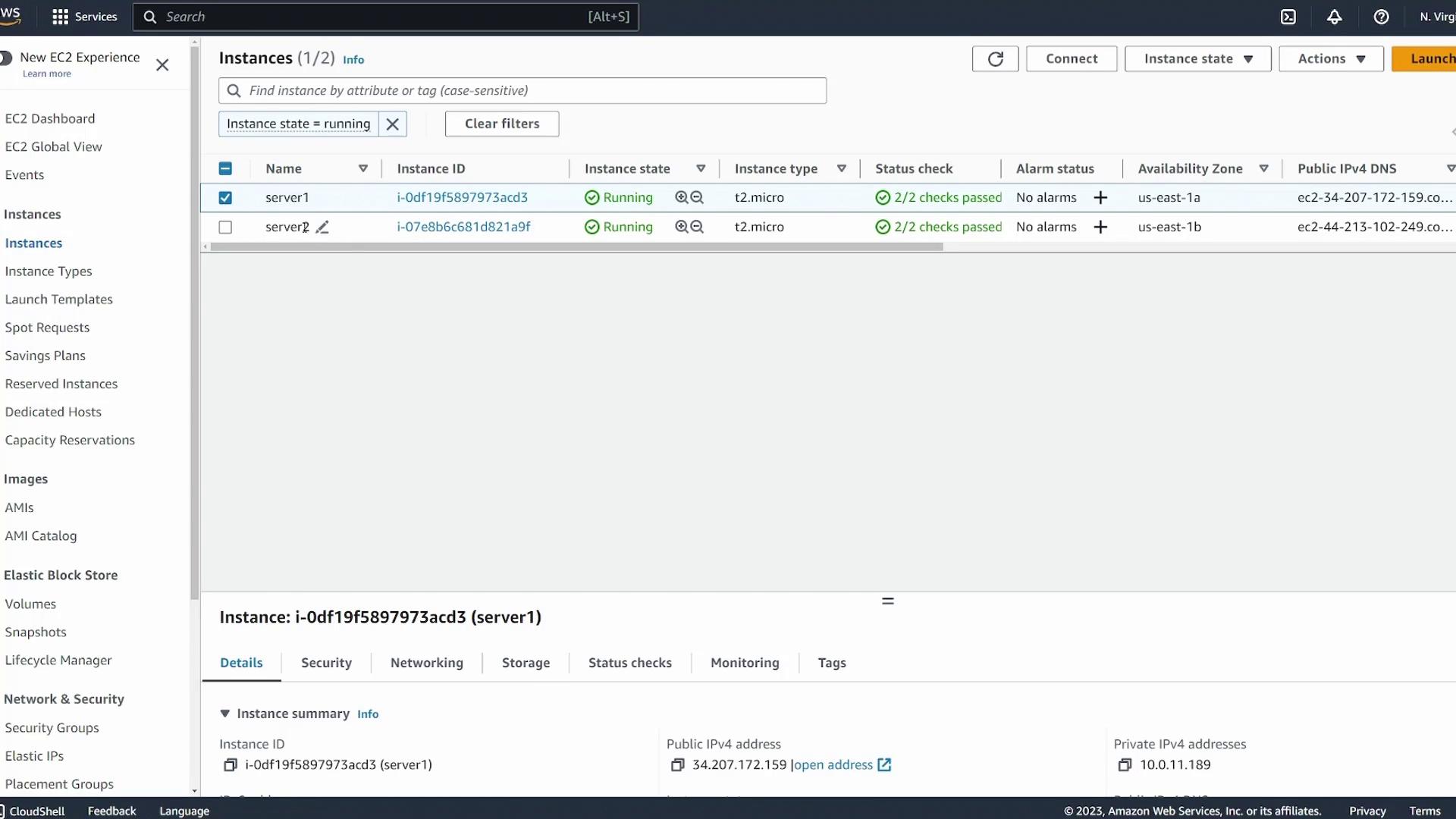
The goal is to mount a single EFS file system on both servers so that they can share data seamlessly.
Creating the EFS File System
Begin by navigating to the EFS page in the AWS console and selecting Create File System.
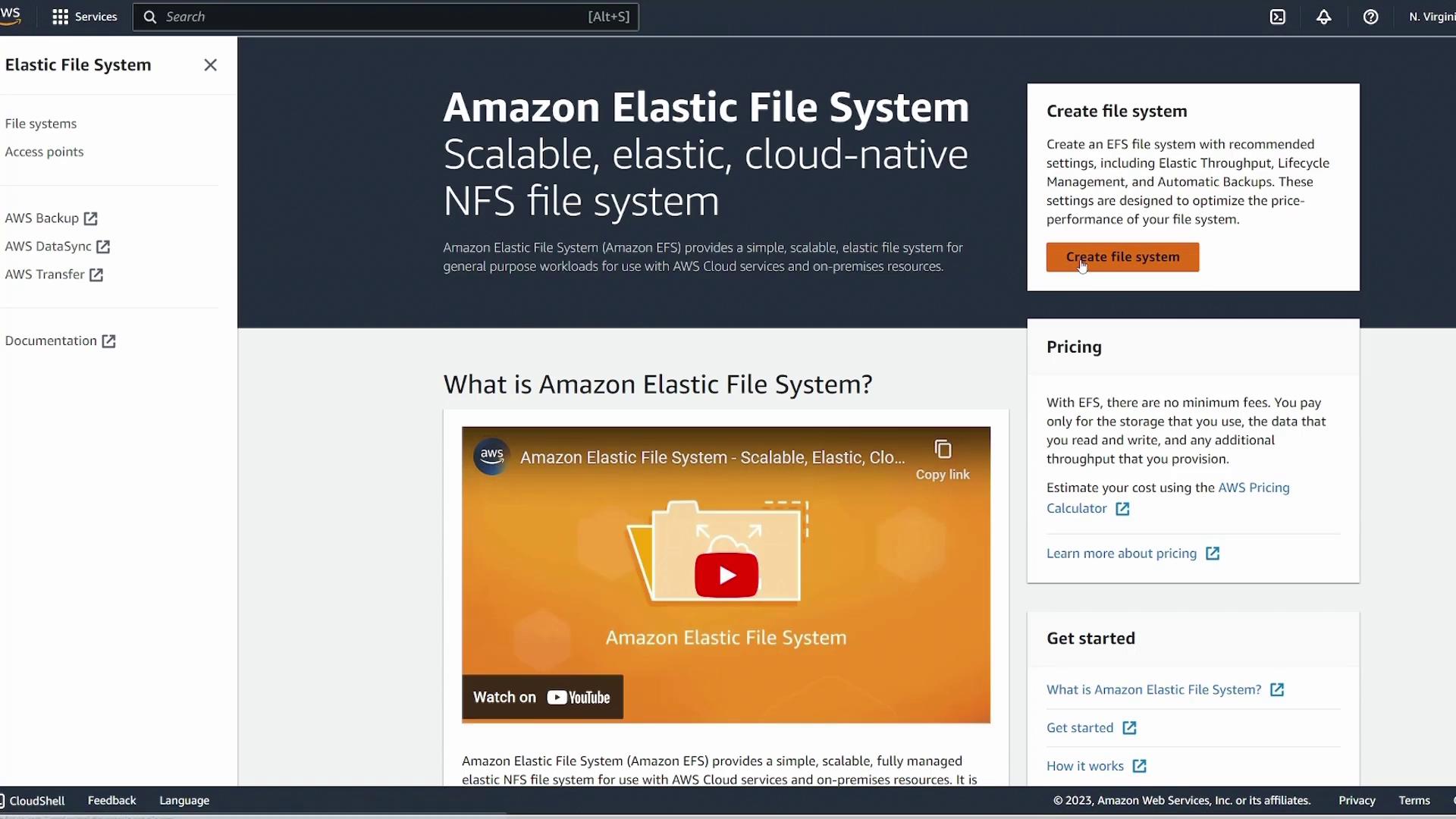
Customizing Your EFS Settings
Click Customize to adjust your EFS configuration:
- Enter a descriptive name (e.g., "EFS demo").
- Select a storage class. Choose a multi-zone configuration for enhanced durability, or a single zone option if your workload allows data redundancy limited to one availability zone.
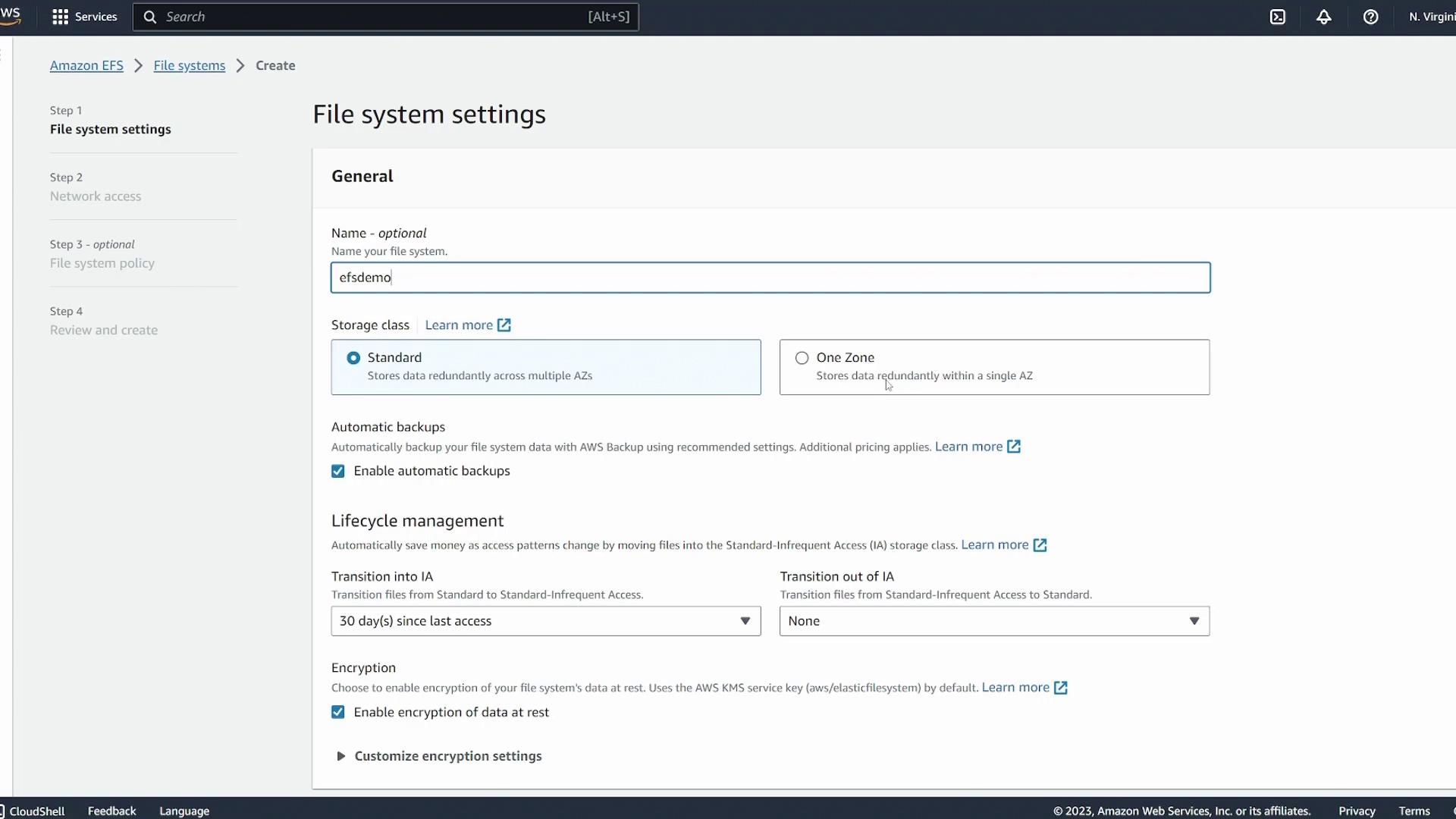
For instance, a single availability zone configuration keeps data redundant within that zone, which protects against individual instance failures but may risk data loss if the entire zone fails. Options for automatic backups and lifecycle management (such as moving files older than 30 days to cheaper storage tiers like S3 Standard-IA) are also available.
Configuring Network Settings
Next, set up the network access:
- Choose the VPC used by your EC2 instances (in our demo, “demo VPC”).
- AWS automatically creates mount targets in each availability zone within the selected VPC. Ensure every zone has a mount target to maintain availability.
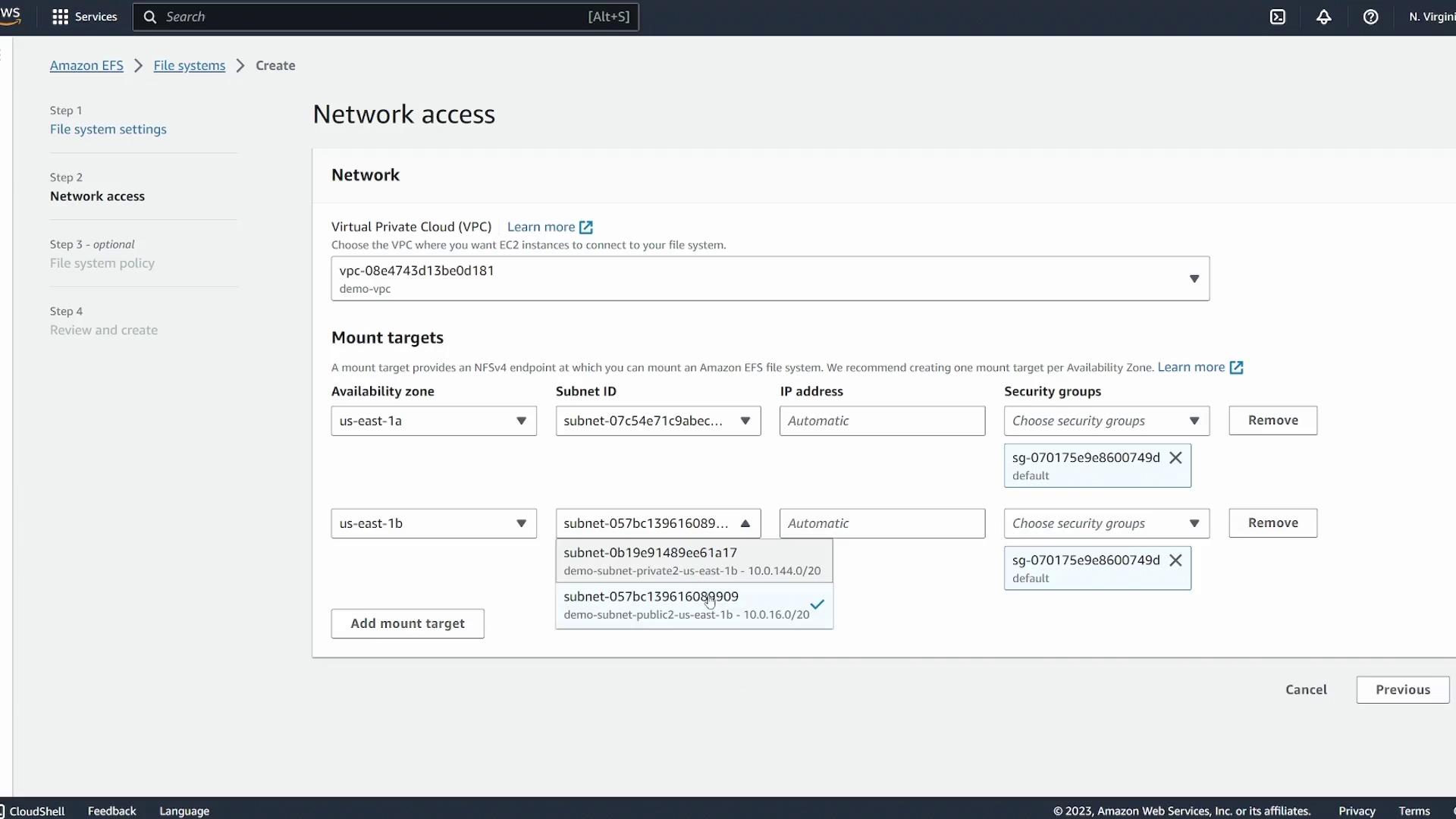
When specifying security groups, you can either create a custom group tailored for EFS traffic or use the security group attached to your EC2 instances if it already permits all necessary communication.
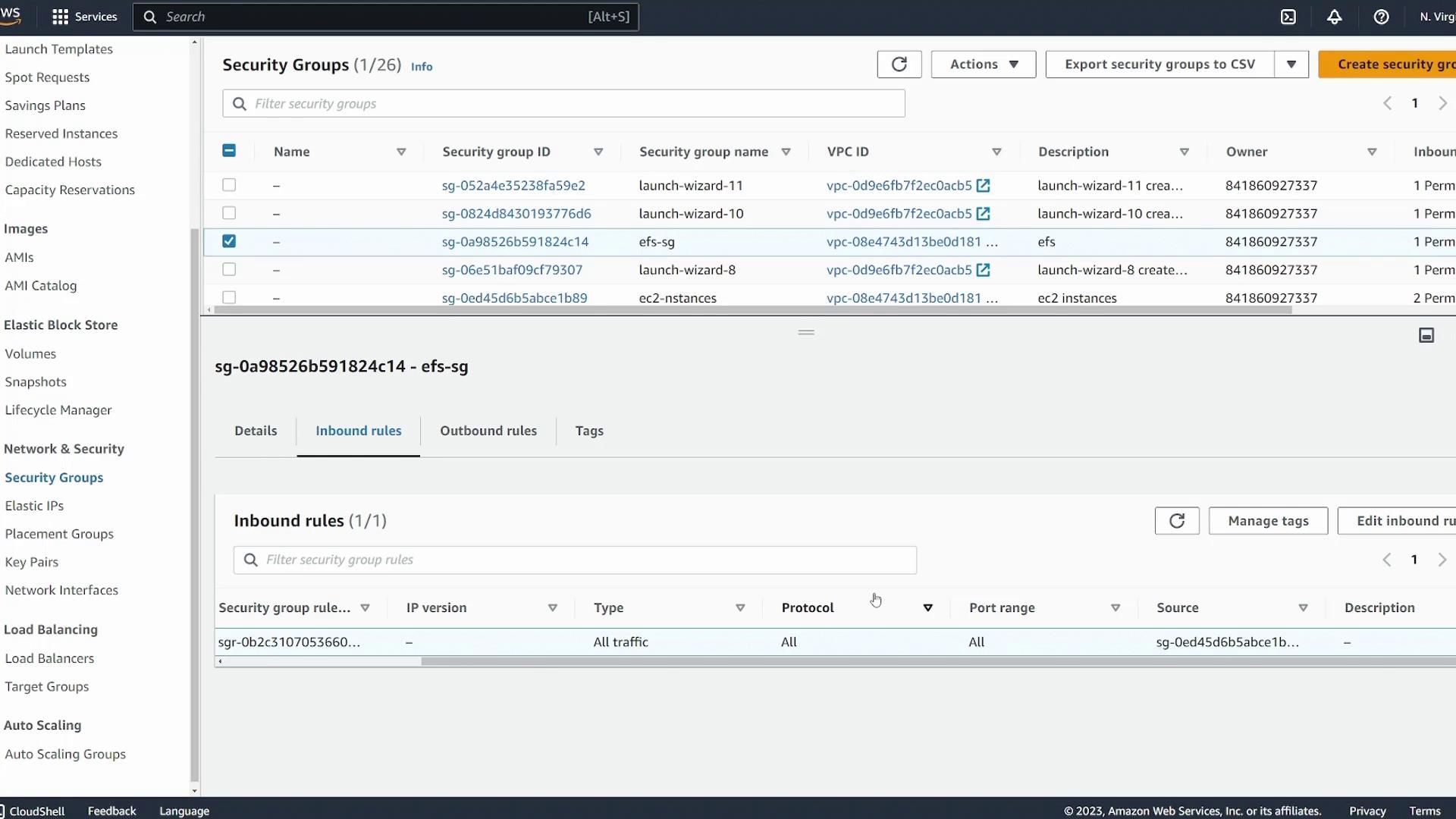
After reviewing the configurations, click Next, review your selections, and then Create. Wait a few minutes for AWS to provision the file system.
Configuring EC2 Instances for EFS
Once the file system is active, log into your EC2 instances to complete the setup. The following steps must be performed on each server.
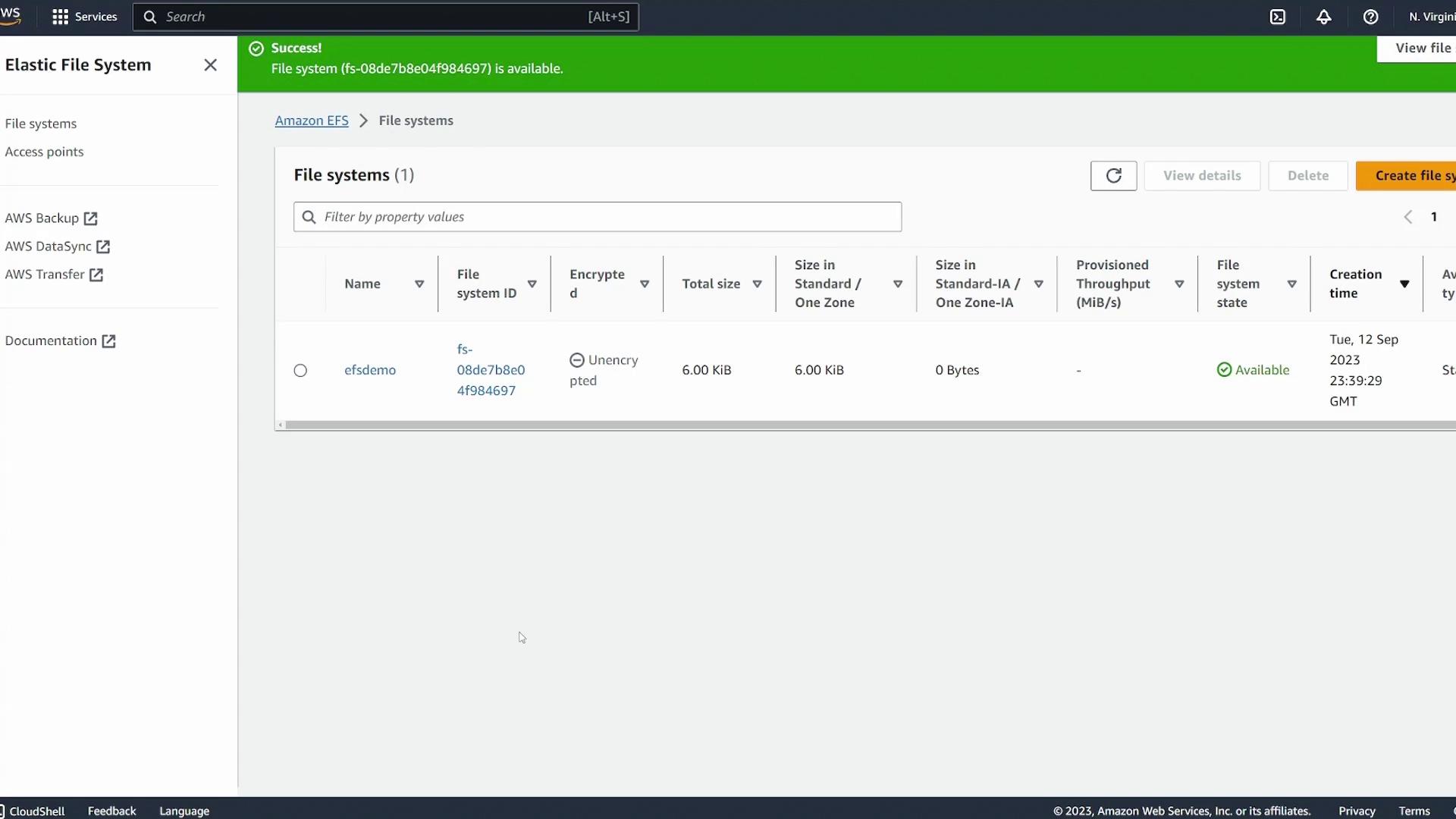
Step 1: Create a Mount Directory
Create a directory that will serve as the mount point for the EFS file system. In this demo, we use /efsdemo:
[ec2-user@ip-10-0-11-189 ~]$ sudo mkdir /efsdemo
Step 2: Install Amazon EFS Utils
Install the Amazon EFS Utils package to simplify mounting the file system:
[ec2-user@ip-10-0-11-189 ~]$ sudo dnf -y install amazon-efs-utils
Repeat this installation on every EC2 instance you plan to mount the EFS.
Step 3: Mount the EFS File System
Mount the file system using the provided file system ID from the AWS console. Replace fs-08de7b8e04f984697 with your file system ID:
[ec2-user@server ~]$ sudo mount.efs fs-08de7b8e04f984697 /efsdemo
Verify the mount status with:
[ec2-user@server ~]$ df -k
Filesystem 1K-blocks Used Available Use% Mounted on
...
fs-08de7b8e04f984697.efs.us-east-1.amazonaws.com:/ 9007199254739968 0 9007199254739968 0% /efsdemo
Persistence Notice
This manual mount is not persistent across reboots. To ensure the EFS mounts automatically after a reboot, add the appropriate entry to your /etc/fstab file following the AWS documentation.
Step 4: Test the Shared File System
To verify the shared access, perform the following tests:
On the first server, navigate to the mount directory and create a file:
[ec2-user@ip-10-0-11-189 ~]$ cd /efsdemo [ec2-user@ip-10-0-11-189 efsdemo]$ sudo vi file1Insert the text:
I made this on server1
On the second server, check the shared directory:
[ec2-user@ip-10-0-22-199 ~]$ cd /efsdemo/ [ec2-user@ip-10-0-22-199 efsdemo]$ ls file1 [ec2-user@ip-10-0-22-199 efsdemo]$ cat file1 I made this on server1
The appearance of the file on both servers confirms that the EFS file system is shared effectively. You can also create another file from the second server (e.g., "file2" with the content "I made this on server2") and verify its presence on the first server.
Below is a consolidated view of the commands executed on one server:
[ec2-user@ip-10-0-11-189 ~]$ sudo mkdir /efsdemo
[ec2-user@ip-10-0-11-189 ~]$ sudo mount.efs fs-08de7b8e04f984697 /efsdemo
[ec2-user@ip-10-0-11-189 ~]$ df -k
Filesystem 1K-blocks Used Available Use% Mounted on
...
fs-08de7b8e04f984697.efs.us-east-1.amazonaws.com:/ 9007199254739968 0 9007199254739968 0% /efsdemo
[ec2-user@ip-10-0-11-189 ~]$ cd /efsdemo
[ec2-user@ip-10-0-11-189 efsdemo]$ sudo vi file1
[ec2-user@ip-10-0-11-189 efsdemo]$ ls
file1 file2
Summary
In this lesson, you learned how to:
- Create an EFS file system with customized settings in the AWS console.
- Configure network settings and security groups to support mount targets in each availability zone.
- Install Amazon EFS Utils on EC2 instances.
- Mount the EFS file system and verify shared file access between multiple servers.
Additional Resources
For further details on persistent mounting and additional configuration options, please refer to the Amazon EFS documentation.
Thank you for following this guide on setting up Amazon EFS. Stay tuned for more tutorials on AWS services in our upcoming lessons.
Watch Video
Watch video content